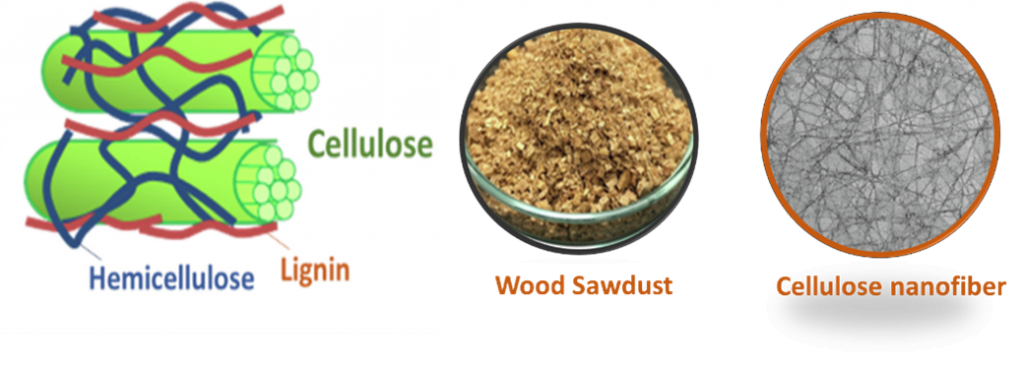Biodegradable composites from renewable resources have been of much interest in many industries because of the diminishing of petroleum and the environmental awareness of plastic waste disposal. Poly(lactic acid) or PLA, a biodegradable polyester, demonstrates a higher commercial potential than other biodegradable polymers. For industrial applications, including packaging, the properties of PLA need to be modified to gain a lightweight composite of appropriate mechanical and thermal properties with good biodegradability.
This work aims to develop a PLA-based composite with a good balance of stiffness and impact strength by combined utilization of cellulose nanofiber (CNF) and polymeric plasticizer. CNF, having diameters of approximately 10 nm was extracted from wood sawdust and mixed with PLA in a melt-mixer. The composites of different performances can be prepared. The composite properties could be efficiently tailored by properly selecting the plasticizers. The composites of high ductility were achieved using PEG plasticizer, whereas the composites containing PBA plasticizer exhibited relatively higher modulus, strength, and heat resistance.
Associated SDG goals are Industry, innovation and infrastructure (9), and Responsible consumption and production (12).

For more details: Kalyanee Sirisinha (kalyanee.sir@mahidol.ac.th)
Kornrawee Srisawat, Wanlop Harnnarongchai, Chakrit Sirisinha, Kalyanee Sirisinha*, Properties of Poly(lactic acid)/Cellulose Nanofiber Biocomposites: Effect of Polymeric Plasticizers. Materials Today Proceedings, 2023, 77, 1127-1131. https://doi.org/10.1016/j.matpr.2022.12.203
